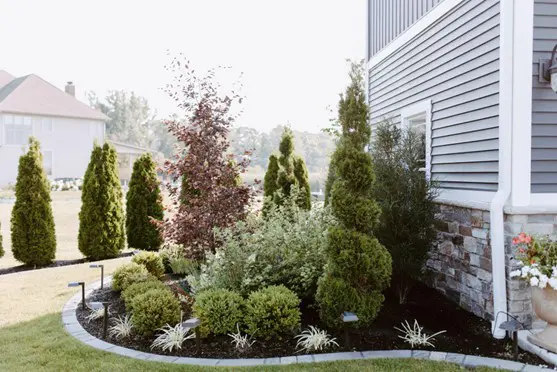Creating a captivating outdoor space is a rewarding endeavor that not only adds visual appeal to your property but also increases your home’s value. One of the most essential aspects of designing your landscape is planning the perfect planting bed.
A well-designed landscape bed can be a breathtaking focal point that brings together the elements of color, texture, and form. Here, we will take you through the steps to plan a landscape planting bed that bursts with life and complements your property flawlessly.
1. Know Your Space and Conditions
Before getting into the finer details of planning a landscape bed, it’s crucial to understand your outdoor space. To do this, study the hardiness zone of your area and choose plants that thrive in your climate. Then, analyze the amount of sunlight different parts of your garden receive throughout the day. This will help you determine the types of plants that will flourish in each spot.
2. Conduct a Soil Test
Healthy plants start with healthy soil. Perform a soil test to ascertain the composition and pH of your garden soil. This will guide you in making the necessary amendments to create the optimal growing environment for your chosen plants. For example, adding a layer of compost to the soil is often beneficial as it enhances drainage, aeration, and nutrient content.
The professional team at Dynamic Landscaping can come out and take a soil sample for you. We will send the sample to a lab for testing. Based on the results, we’ll help you formulate a plan for growing the plants of your dreams.
3. Design With Layers in Mind
An effective garden design involves creating visual interest through layers. Plan your landscape bed by arranging plants according to their heights, with taller plants at the back and shorter ones at the front. This layering technique ensures that each plant gets sufficient sunlight while also providing depth and dimension to your planting bed.
4. Choose a Color Palette
Selecting a color palette for your landscape bed is like choosing the paint colors for a masterpiece. As you plan your landscape planting bed, consider mixing complementary colors, like the classic combination of purple and yellow, to create an eye-catching display. Alternatively, you can use a variety of shades and hues to add depth to your planting bed while repeating certain colors throughout the space to tie everything together.
5. Create a Focal Point
Every landscape planting bed needs a focal point that draws the eye and anchors the design. This could be a striking flowering tree, an ornate sculpture, or a captivating arrangement of colorful flowering plants. Regardless of which one you choose, it’s helpful to remember that the focal point should add a sense of purpose and personality to your landscape bed.
6. Lay Out the Garden Bed
Once you’ve conceptualized the design, it’s time to physically lay out the garden bed. Use a garden hose or a sprinkle of flour to outline the desired shape and size of your planting bed. This step gives you a visual preview of how the bed will fit into your overall landscape and allows you to make adjustments before digging in.
7. Choose the Right Plants
Selecting the right plants ensures the success of your landscape bed. Opt for plants that are well-suited to your hardiness zone and growing conditions. Consider a mix of perennial and annual flowering plants to ensure year-round beauty. When you work with our landscape designers, we will incorporate outdoor plants from our greenhouse to give your landscape a unique touch and to ensure the proper selection of your plants.
8. Use Proper Planting Technique
When planting, be sure to dig holes slightly larger than the plant’s root ball. Gently remove the plant from its container and loosen the roots before placing it in the hole. Fill in with soil, pressing lightly to eliminate air pockets. Water thoroughly after planting to help settle the soil around the roots.
9. Implement Landscape Fabric
To deter weed growth and conserve moisture, consider using landscape fabric as a base layer before planting. Cut holes in the fabric where you plan to place your plants. This prevents weeds from competing with your chosen plants for nutrients and water.
10. Maintain and Enjoy
Congratulations, you’ve now planned and executed your landscape planting bed! Regular maintenance is essential to ensure your plants thrive. Water according to each plant’s needs and deadhead spent flowers to encourage continuous blooming. As the growing season progresses, make adjustments based on the plants’ growth and how they interact visually.
Need Help Planning Your Landscape Bed?
Are you excited to transform your outdoor space with a stunning landscape planting bed? Our team at Dynamic Landscaping is here to guide you through the process.
Our landscape design service can help bring your vision to life while ensuring that all the elements, from plant selection to layout, are expertly executed. Don’t hesitate to contact us and take the first step towards creating the perfect landscape bed that reflects your unique style and enhances the beauty of your home.

